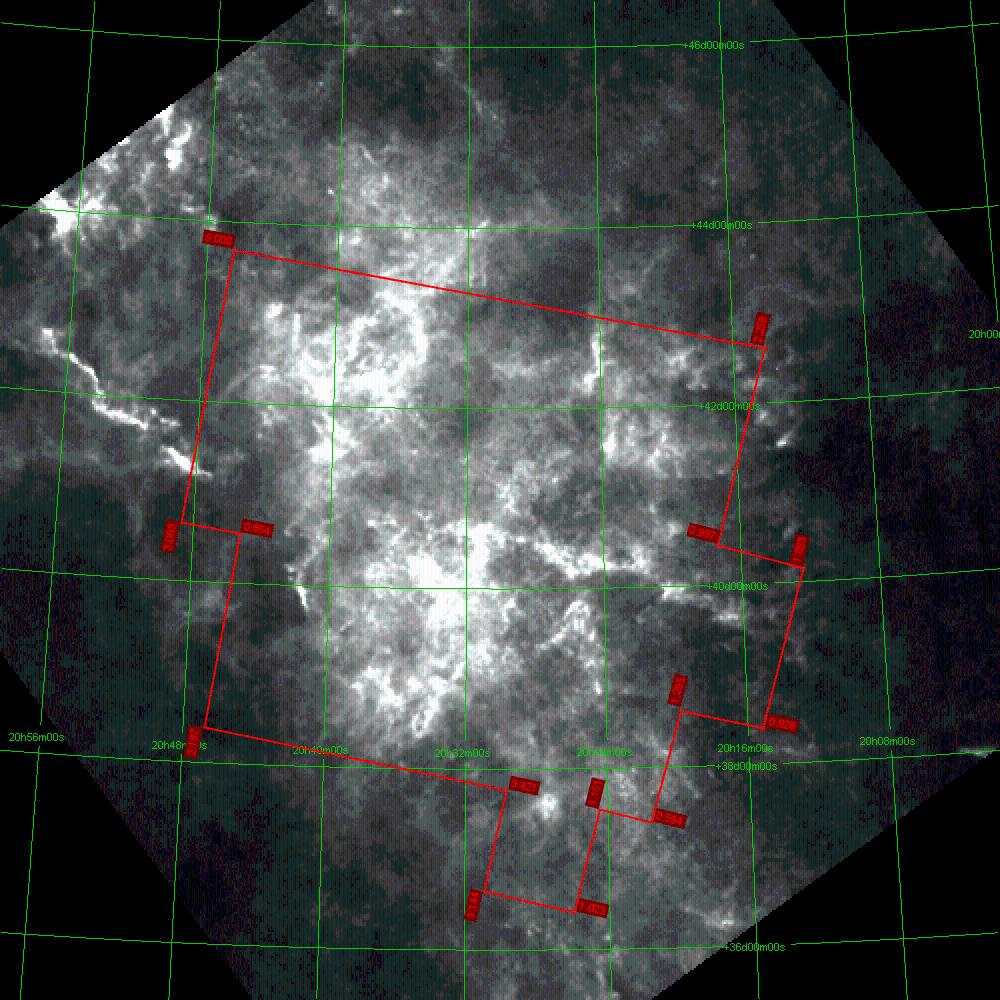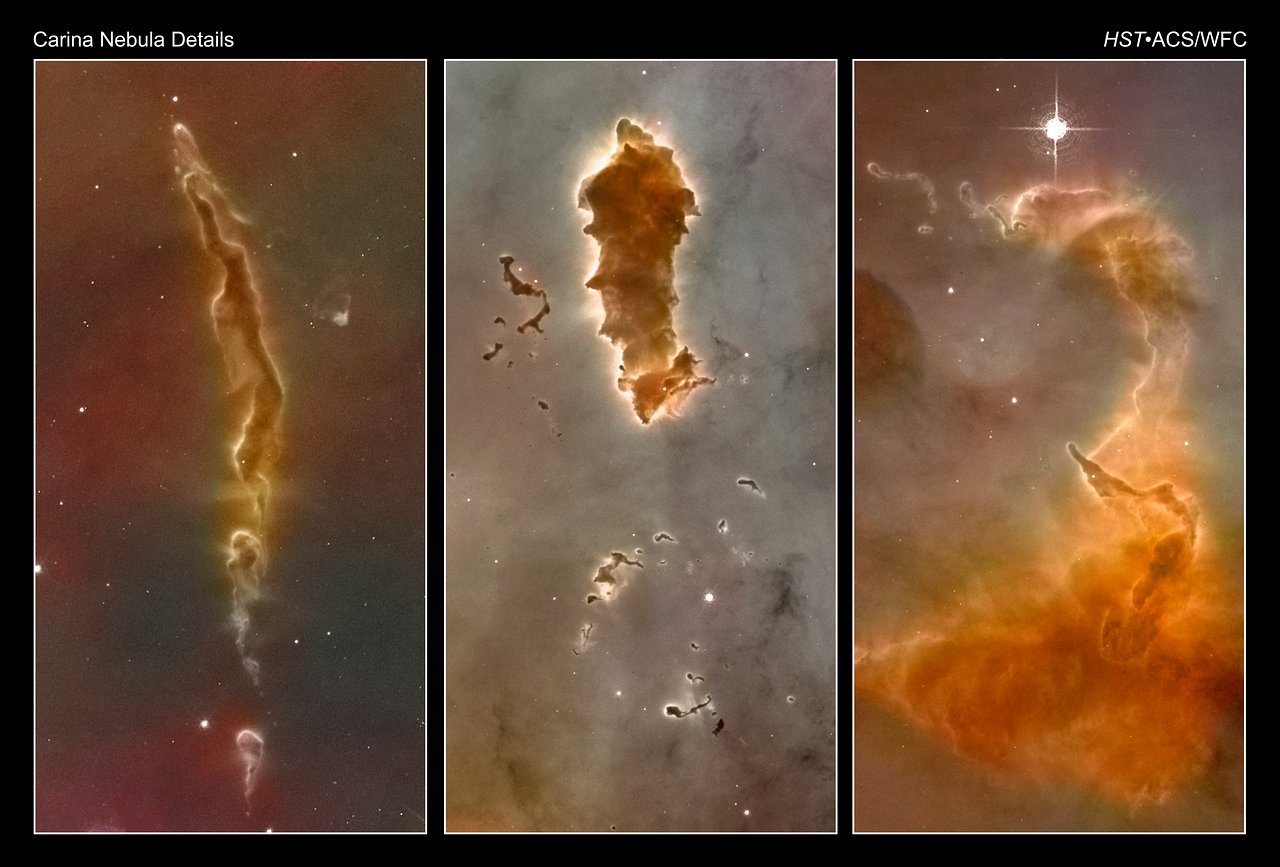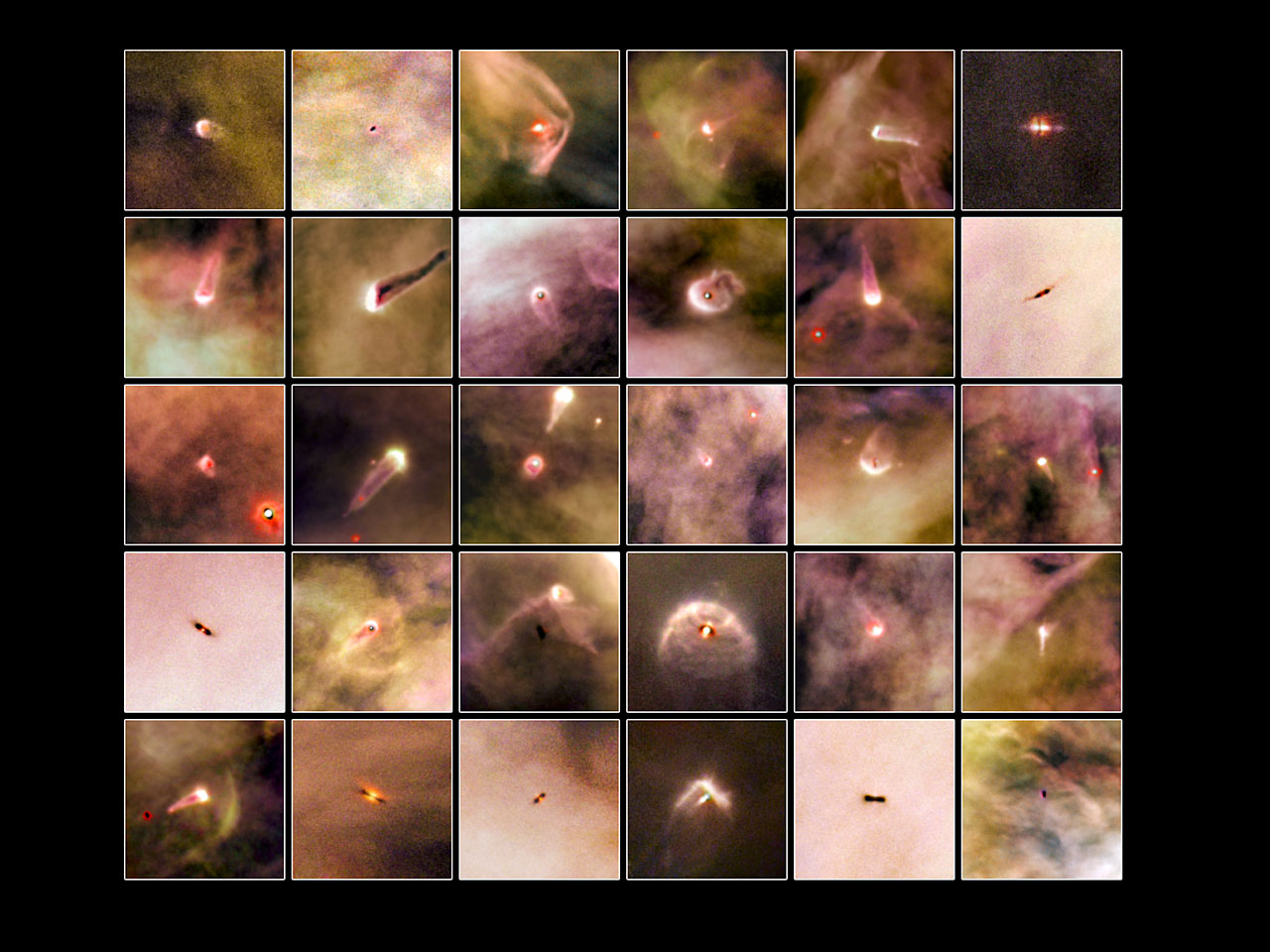Hows my blogging? Leave some feedback, I get better at this, you get a more interesting read!
A little while ago I posted this image of the Cygnus X star-spawning region:
Image above: A grand view of Cygnus-X, a massive complex of star spawning gas and dust, as seen by the ESA Herschel space observatory, in infrared light. Image courtesy of ESA. Yes I know it goes over the border a bit (Edit: It doesn't now!). I couldn't bear to show it any smaller.
It made my brain explode, although not literally. If it had done that I wouldn't have been terribly, terribly, tempted to set it as my desktop background - and I've had to put a moratorium on changing the desktop. I was making a new one every time another jaw dropping space image came down, which meant twice a day some weeks.
It wasn't until a few days ago that this occurred to me: As well as being stunning to look at - in fact one of the things that makes it so stunning - you can tell with a glance that this is a vast, complex, alien realm.
With a lot going on in there that has bearing of our own star systems deep past I ought to talk about some of the things that we know, or strongly suspect, might be hiding in that amazing picture.
So, here is the tour of Cygnus X:
The Milky Way galaxy as imaged by DIRBE (Diffuse Infrared Background Experiment). Cygnus X is circled in green. Image courtesy of NASA.
All good tours start with some background:
The Cygnus X region, located 4,500 light years away in the direction of the Cygnus constellation, was first identified as unusual by two radio astronomers: J. H. Piddington and H. C. Minnett.
They were 'listening' to radio signals from space, and found a diffuse but powerful region of radio emissions in the constellation of Cygnus. Believing the source to be a vast cloud of ionised interstellar gas [1], they christened it Cygnus-X to separate it from the radio emitting galaxy Cygnus-A, which lies in the same part of the sky.
As it turned out, the cloud is one of the biggest and most active in the local galaxy, weighing in at something like three million times the mass of our sun. It is a birthplace for giant blue stars [2], and so the huge complex of gas and dust hums with cosmic rays [3], and electromagnetic radiation [4] on almost every frequency.
As such its a prime target for astronomers, and some of the greatest observatories on Earth, and in space, have devoted time to it. Infra red observations by space observatories like Spitzer [5] and Herschel [6] - using frequencies of infra red light that are blocked by Earths atmosphere - can image otherwise invisible objects behind veils of dust.
The section of Cygnus X studied by the Spitzer infra-red space telescope. Image courtesy of NASA/JPL.
Image above: A false colour, infra-red, Spitzer Space Telescope image of Cygnus X. Hugely overpowered stellar winds from blue giants and angry young protostars have blown voids into the clouds, giving them a foamy texture. Image courtesy of NASA/JPL.
But what else is there? I can't zoomify the image enough to show all the things that are, or could very well be, in there. But here are some examples of the things we know lurk in such chaotic and seething parts of the galaxy:
On the right hand side of the image at the very top of this post we see strings and filaments of gas, where the cloud is collapsing to firm new stars. Some of the young stars are forming inside long tendrils of cloud material - like the famous 'pillars of creation' in the Orion Nebula - and some are forming along huge filaments of cloud, like berries on a vine.
Image above: A close up on the most complex region of filaments in the newest Cygnus-X image. Image courtesy of ESA.
Image above: Bok globules in the Carina Nebula, as seen by the Hubble Space Telescope . Image courtesy of NASA/JPL/ESA.
Herbig-Haro objects [9] are jets of ultra-hot gas, as much as twenty Earth masses worth, spat out of the poles of new-born stars at hundreds of kilometres per second. Where this blast ploughs into the surrounding gas it excites the gas molecules, causing the green-blue glow. These are more common from growing binary star systems:
Video above: Hubblecast on Herbig - Haro stars. Video courtesy of ESA.
Propylyds [10] are protoplanetary discs orbiting the infant stars, where the building blocks of new solar systems are growing, even as matter from the inner edge of the disc is gulped down onto the young stars surface by its magnetic field and vapourised:
Hubble images of propylyds in the Orion nebula. Image courtesy of NASA/JPL.
Cygnus OB2-12 is a blue hypergiant star [11], 92 times more massive that the sun, millions of time brighter than our sun, and over 18,000 degrees kelvin at the surface, that may be blowing itself apart as we watch.
Artist impression of a Hypergiant rising over a nearby planet.Image courtesy of Supportstorm
The open cluster [12] NGC 6910, a family of young stars still surrounded by the remnants of the clouds that gave birth to them:
Image above: The open cluster NGC 6910, a gaggle of young stars. Image courtesy of Dr. Franz Gruber.
 Image right: The Gamma Cygni supernova, or to be more precise, the still expanding remains of the giant star that caused it. The 7000 year old gamma Cygni supernova remnant, a vast zones of destruction almost a hundred light years across, with the stellar core still 'living' in the centre as a pulsar [13]. Pulsars are balls of superdense matter with an iron crust and an interior of neutron super fluid [14], a pinhead of which would outweigh a supertanker. The dead star is still spinning hundreds of times a second, giving off twin lighthouse beams of radiation, and powering a magnetic field up to 1000,000,000,000 Gauss. By comparison the whole of Earths iron core manages a field strength of 0.3 Gauss. Even weirder, its electric field is so strong that it spontaneously decays [15] into matter and antimatter, electrons and positrons 'just' appearing out of the intense electric field.
Image right: The Gamma Cygni supernova, or to be more precise, the still expanding remains of the giant star that caused it. The 7000 year old gamma Cygni supernova remnant, a vast zones of destruction almost a hundred light years across, with the stellar core still 'living' in the centre as a pulsar [13]. Pulsars are balls of superdense matter with an iron crust and an interior of neutron super fluid [14], a pinhead of which would outweigh a supertanker. The dead star is still spinning hundreds of times a second, giving off twin lighthouse beams of radiation, and powering a magnetic field up to 1000,000,000,000 Gauss. By comparison the whole of Earths iron core manages a field strength of 0.3 Gauss. Even weirder, its electric field is so strong that it spontaneously decays [15] into matter and antimatter, electrons and positrons 'just' appearing out of the intense electric field.And where you have lots of unstable stars, and at least one confirmed supernova, you will almost certainly find others, and their 'undead' stellar leftovers: Neutrons stars [16], black holes [17], perhaps even stranger things like quark stars [18].....
Finally, just because space explorers are great, here are a selection of amazing views of Cygnus X, in frequencies across the electromagnetic spectrum:
Video above: Cygnus X, from a wide variety of instruments. Video courtesy of NASA.
There may be even stranger things in such regions of space. To really push the speculative boat out: A mix of dust and plasma - such as clouds like Cygnus-X are made of - is known to form 'crystals' where the dust forms a regular repeating pattern in the plasma. Computer simulations have suggested that plasma crystal structures not unlike DNA [19], with some ability to evolve and replicate, may be possible.
All the above is just a slice of the things at play in Cygnus X, and similar, wilder regions like the Tarantula Nebula [20] . And it amazes me still further to think that our Sun and solar system was probably born in a not dissimilar place, almost five billion years ago...
And ,in other news much, much closer to home: A video of the Sutter's Mill meteorite [21] -a real relic from the solar systems earliest times - has surfaced. I looked for hours for one when I posted on the subject a while back, and I'm thrilled that someone has managed to take a video of the minivan sized space rock hitting our atmosphere. And exploding with the force of small nuclear weapon. Only a small one though. Enjoy!
Video above: Big rock smashes into Earths atmosphere. And you've gotta love that soundrack. Video courtesy of Shon Bollock.
List of links:
[1]http://www-ssg.sr.unh.edu/ism/what1.html
[2]http://www.sciencedaily.com/articles/b/blue_supergiant.htm
[3]http://helios.gsfc.nasa.gov/qa_cr.html
[4]http://imagine.gsfc.nasa.gov/docs/science/know_l1/emspectrum.html
[5]http://www.spitzer.caltech.edu/
[6]http://herschel.esac.esa.int/
[7]http://www.astronomynotes.com/starsun/s7.htm
[8]http://www.universetoday.com/24499/journey-inside-a-bok-globule/
[9]http://www.stsci.edu/stsci/meetings/shst2/ballyj.html
[10]http://campus.pari.edu/mwc/html/proplyds.html
[11]http://cronodon.com/SpaceTech/Hypergiant.html
[12]http://messier.seds.org/open.html
[13]http://imagine.gsfc.nasa.gov/docs/science/know_l2/pulsars.html
[14]http://physicsworld.com/cws/article/news/2011/mar/02/neutron-star-has-superfluid-core
[15]http://adsabs.harvard.edu/full/1972ApJ...178..809P
[16]http://imagine.gsfc.nasa.gov/docs/science/know_l1/neutron_stars.html
[17]http://www.nasa.gov/audience/forstudents/k-4/stories/what-is-a-black-hole-k4.html
[18]http://news.discovery.com/space/why-are-quark-stars-so-strange.html
[19]http://physicsworld.com/cws/article/news/2007/aug/15/helices-swirl-in-space-dust-simulations
[20]http://apod.nasa.gov/apod/ap051212.html [21]http://apod.nasa.gov/apod/ap120428.html









No comments:
Post a Comment